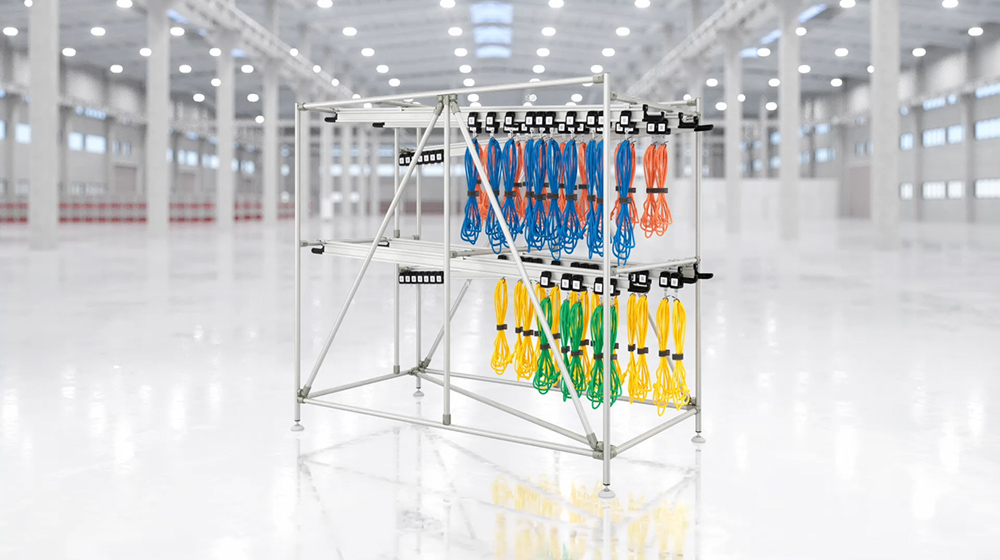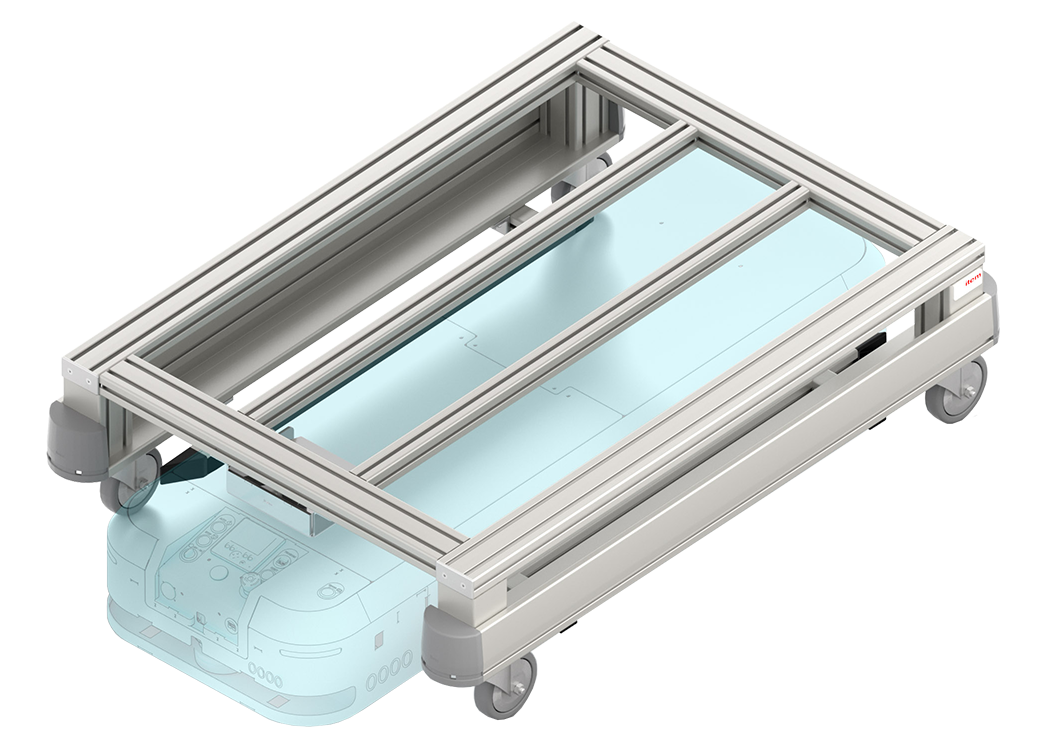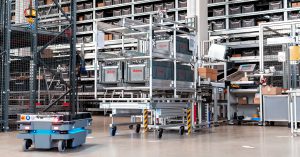Efficient and flexible – the combination of suspended conveyor technology from item and autonomous mobile robots (AMRs) from Peer Robotics offers an innovative solution for internal material flows.
Time is money! This famous saying credited to former U.S. President Benjamin Franklin is truer than ever in today’s fast-paced industrial environment. Throughput times need to be reduced and waiting times need to be avoided. All of that makes smooth material supply processes essential. Materials must be available at all times so staff can get on with the work that adds value, without disruption. However, this poses a major challenge in branches of industry such as the automotive and electronics sectors, where materials need to be transported efficiently between the warehouse, production line and dispatch section. Combining the item Suspended Conveyor System with a learning-capable autonomous mobile robot (AMR) from robot manufacturer Peer Robotics offers an innovative solution to this challenge.

Suspended conveyor technology from item
The item Suspended Conveyor System offers a particularly compact solution for transporting bulky components that tend to get tangled up. This manual system uses only the force of gravity to transport goods down a gentle slope.
Collaborative mobile robots for easy integration and handling
When it comes to optimising internal material flows, AMRs are becoming ever more important. Operating autonomously, these mobile robots can navigate unregulated surroundings, meaning they don’t rely on fixed routes or tracks. To find their way around, AMRs generally use maps that are either created on site by the robot’s software or uploaded onto the robot in the form of a floor plan. With the aid of integrated cameras, scanners and sensors, the AMRs automatically calculate the shortest route to their destination. If that destination changes, a new map needs to be programmed accordingly.
Mobile robots from Peer Robotics, fitted with various superstructures, can be used easily and flexibly for a huge range of working processes.
Peer Robotics specialises in collaborative AMRs with integrated intelligence. Thanks to the patented Person2Peer technology, the robot learns from people in real time. “Our mobile robots can understand if a human is applying a force to the robot. Once the robots recognise that a human is applying force feedback, they switch to learning mode, so they can learn about the external environment and the path the user wants the robot to take in,” explains Rishabh Agarwal, co-founder of Peer Robotics. This means these mobile robots, fitted with various superstructures, can be used easily and flexibly for a huge range of working processes.
AMRs and suspended conveyor technology – transporting bulky materials efficiently
Peer Robotics currently offers solutions for moving around trolleys, containers and pallets. These AMRs can be used to automate processes such as kitting, material infeed and the placement of finished products in storage. In collaboration with item America, the robot manufacturer has developed a new innovative solution for material supply – an AMR combined with the item Suspended Conveyor System as the Top Module. “This is a combination not used in any market yet,” says Ben Hull, Director of Sales at item America. It has huge potential, particularly for the automotive and electronics industries. Moving around materials such as ESD mats, cable harnesses and large automotive parts normally uses up a lot of space and requires human intervention, all of which can potentially generate waste. In contrast, our Suspended Conveyor System enables space-saving and efficient transportation. What’s more, when combined with the mobile robots from Peer Robotics, it offers you a fully automated, end-to-end solution.
Components and materials are hung up by slotting them onto a Conveyor Rail Profile using a special Carriage. This Conveyor Rail Profile, which is fitted at a slope of just 3°, ensures the goods being transported glide directly to the removal point by gravity alone.
The item Suspended Conveyor System is particularly suitable for transporting parts that are too large for small load carriers (SLCs) or that can easily become entangled. Components such as cable harnesses and mats can be hung up or placed in bags for optimum material supply, slotting them onto a Conveyor Rail Profile using a specially designed Carriage. This Conveyor Rail Profile, which is fitted at a slope of just 3°, ensures the goods being transported glide directly to the removal point by gravity alone. The Carriage is ESD-safe, designed to resist tipping and self-locking, and compensates for swaying motions. By using Separator 6, Carriage D37-32, you can also ensure that the goods being transported are delivered sequentially. The Conveyor Rail Profile is easy to install at the desired height and with the preferred slope in a frame made of Profiles D30 or any other pre-existing frame.

Maximum flexibility with Peer Robotics and item
“When we looked at the item portfolio, it was clear that a collaboration would lead to significant benefits for our customers,” Agarwal explains. The item Suspended Conveyor System is only the start of the collaboration between item and Peer Robotics. Work on another superstructure, or Top Module, is already in progress. “We are planning an automatic delivery system that operates between the Top Module and a stationary rack,” Hull reveals. There are certainly no limits to what can be achieved when designing Top Modules.
Thanks to the modular building kit system principle, item components can be used to build Top Modules for a whole range of requirements.
The plan is for the AMRs from Peer Robotics to be compatible with all item Top Modules in the future. “We offer our mobile robots as a platform and are making them compatible with frames from item, so users can get the Top Module they need directly from item,” Agarwal explains. Customers can choose from a wide variety of sample solutions. Thanks to the modular building kit system principle, our components can be used to build customised Top Modules for a whole range of requirements. The choice of profile determines the payload that can be carried. When moving around boxes and SLCs, it is advisable to use lightweight profiles such as those offered by Profile Tube System D30. If heavy parts need to be transported, it is best to use our item Building Kit System. Moreover, the end-to-end compatibility of our components means that both systems can be used together. When combined with the versatile AMRs from Peer Robotics, the end result is material supply solutions for internal material flow that are geared to specific requirements.

Do you want to equip your mobile robots? With item, you can do exactly that!
Equip your autonomous mobile robots with the appropriate Base Cart and Top Module from item. Simply add a compatible Base Cart to your mobile robot and choose from a variety of Top Modules to create the ideal solution for your automated processes.
Are you interested in suspended conveyor technology? Then we have something that’s right up your street! Simply subscribe to the item blog by completing the box at the top right.





